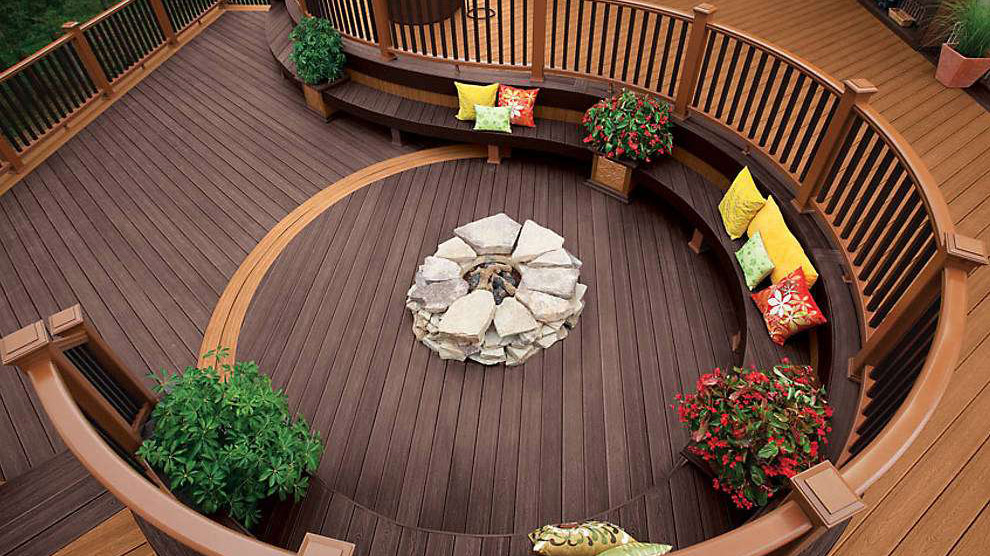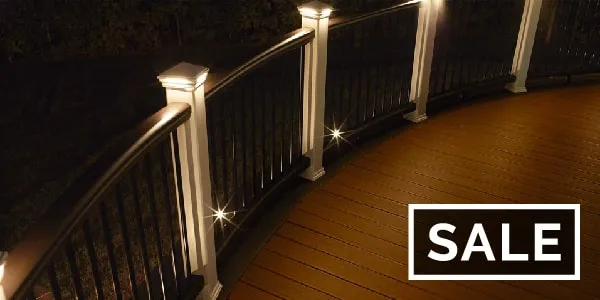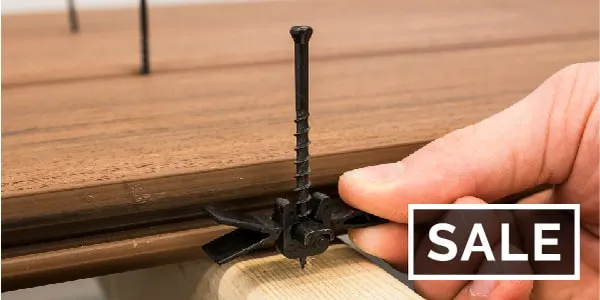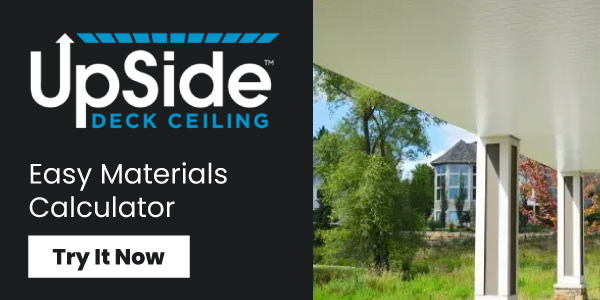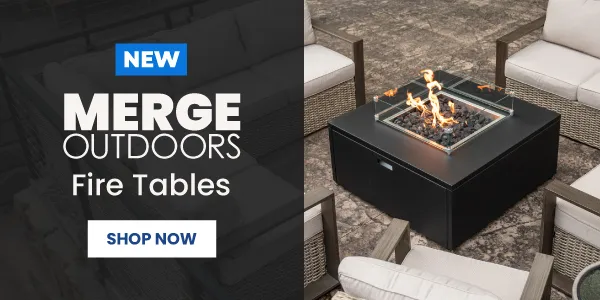Composite Decking vs Wood
A deck is an amazing thing: having a deck allows you to escape from the stresses of everyday life without even leaving your house. A comfortable outdoor space is wonderful for a relaxing cup of coffee on clear spring mornings, a grillout on lazy summer afternoons, or a glass of wine on crisp autumn evenings.
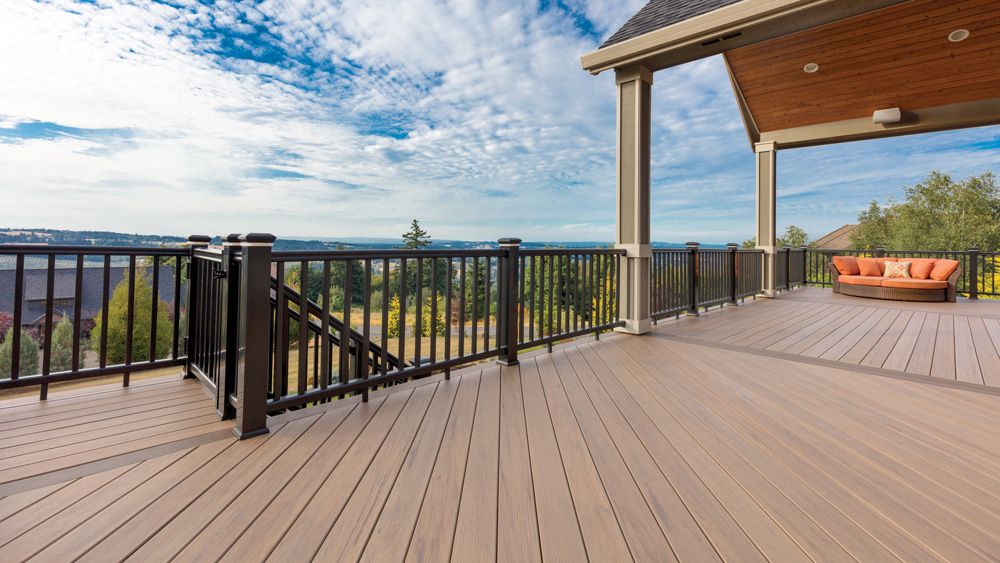
When planning a new deck build or a deck renovation, it’s vital to keep that in the front of your mind: a deck is about enjoyment and relaxation. The decking material you choose can set you up for long-term deck bliss - or add chores and recurring costs to your plate. That’s why it’s important to pick the right decking material for your space.
Traditionally, decks, porches, and other outdoor living spaces have been made of wood, but decking material options have exploded in recent years. Composite decking provides a much lower-maintenance alternative to wood. When it comes to a wood deck vs a composite deck, it’s important to know how each material will affect your deck life - and your deck’s lifespan. That’s why we’ve created this comprehensive guide to help you decide on whether wood or composite decking is for you.
At DecksDirect, we love helping customers pick the perfect decking. For help planning your project, call 1-888-824-5316 to talk to an experienced project manager. The best part? It’s totally free to call!
Table of Contents
- Factors to Consider When Choosing Wood or Composite Decking
- Construction Materials
- Price Differences
- Design and Curb Appeal
- Environmental Factors
- Safety
- Maintenance
- Eco-Friendliness
- How to Decide What Works Best For You
- The Last Word on Wood vs Composite Decks
Factors to Consider When Choosing Wood or Composite Decking
There are a number of factors that need to be considered when you’re choosing your decking material. Let’s go through each of them in turn to provide you with the most comprehensive comparison we can.
Construction Material
To start, let’s understand what each type of decking is made from. Wood decks are pretty straightforward: they’re made from harvested lumber. There are a number of different types of wood that are used in decking: cedar is a common choice because it’s relatively easy to work with. Exotic woods such as ipe, cumaru, and others are also popular, though more expensive and harder to source. Meanwhile, wood decks are made of more common types of wood that are injected with preservatives in a pressure chamber. This pressure-treated wood has been widely used for cheaper decks to avoid the costs of rare hardwoods.
Composite decking, meanwhile, mixes natural wood fibers with long-lasting synthetic materials for a deck board that looks and feels like real wood, but lasts much longer and requires less maintenance. This type of decking is highly resistant to rot because it contains less organic material. Composite decking is also resistant to staining and fading over time, and is often covered by long fade and stain warranties.
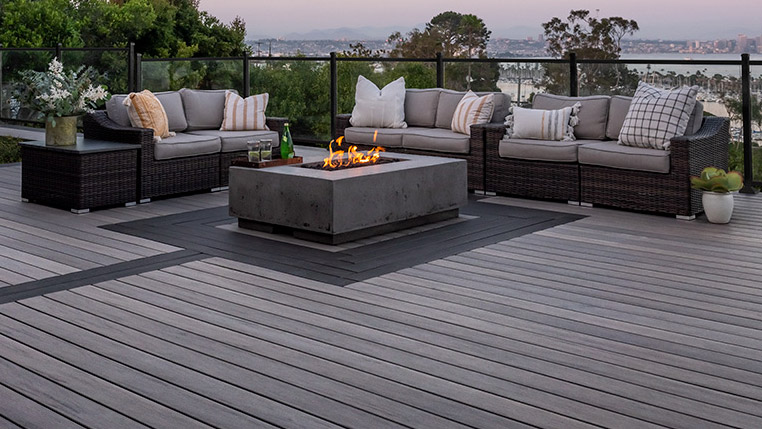
Closely related to traditional wood-plastic composites are PVC deck boards and mineral-based composite decking. Cellular PVC decking is made from 100% synthetic material, making it lighter and even more mold-resistant. Mineral-based composites are a newer innovation in the low-maintenance decking space, offering better strength and less expansion and contraction with changing temperatures. You can read more about the innovative mineral-based composite technology here.
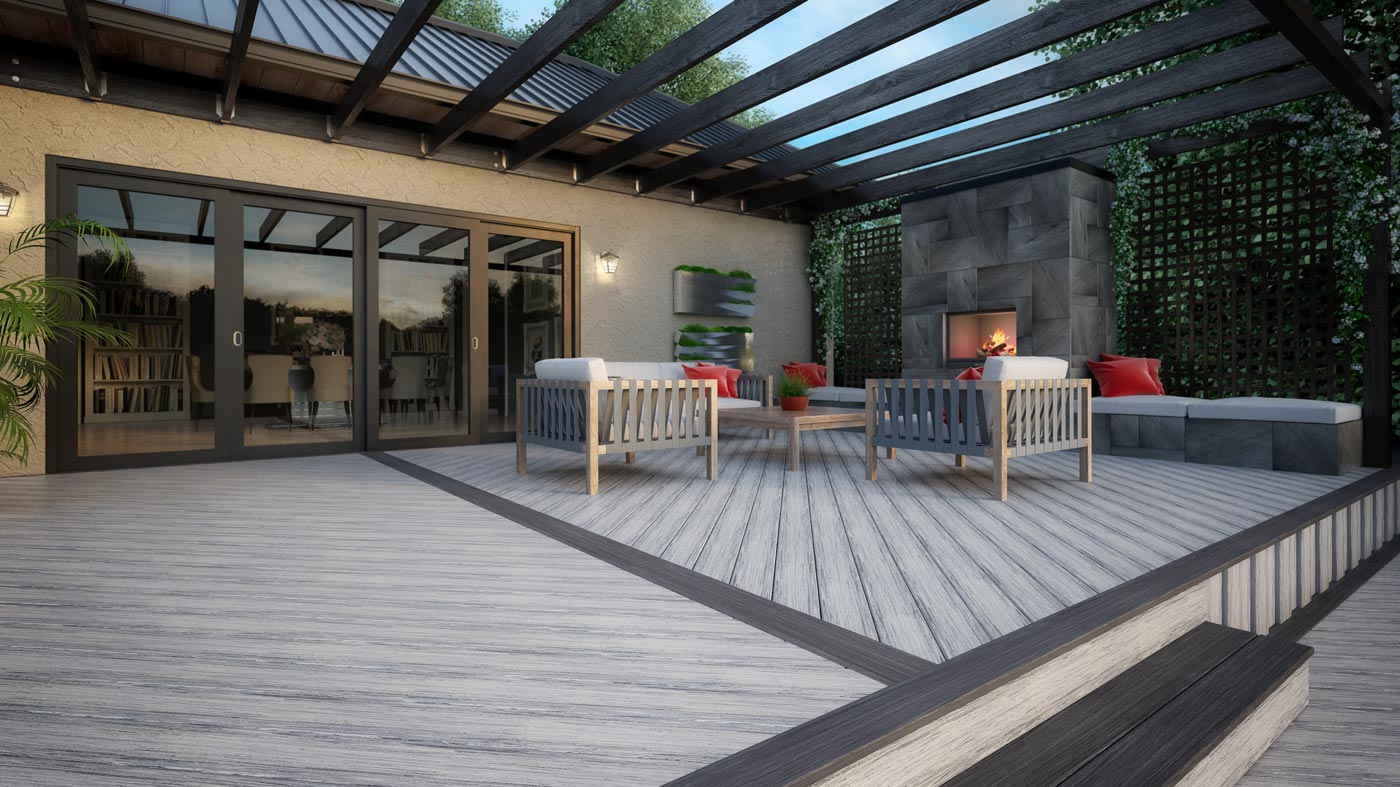
Longevity
The biggest advantage composite decking has is its long-term durability. Composite decking holds up significantly better than wood over years exposed to the outdoor elements. A deck is a large and long-term investment: you expect to enjoy your deck space for decades. Wood requires heavy maintenance every single year and still weathers a lot worse than composite decking. That makes modern composites the best choice if you want a low-maintenance deck that will stay in good shape for years to come.
Relative Strength
Traditionally, wood has held an edge over composite decking when it comes to strength. However, the playing field is changing a bit based on two factors:
#1: Composite is improving while wood is declining: the wood used to build decks thirty years ago was structurally stronger than the wood used in decking today. That’s because lumber quality is continually declining as the growing, harvesting, and preparation processes become more focused on speed than quality. You can see it in the distance between growth rings in modern lumber. Composite material, meanwhile, is moving in the opposite direction. Composite decking companies continue to improve their materials and processes with every passing year, improving strength, performance, and appearance.
#2: Durability: At the moment you install, wood is stronger than composite. But it doesn’t take long for the playing field to even out as wood degrades and deteriorates and composite decking holds its strength and finish despite the elements.
Color Fading
Both wood and composite decking fade over time. However, the amount of fading is vastly different - composite decking does not lose its color nearly as much as wood decking does, even if you regularly sink lots of hours (and dollars) into your deck in stains and sealants.
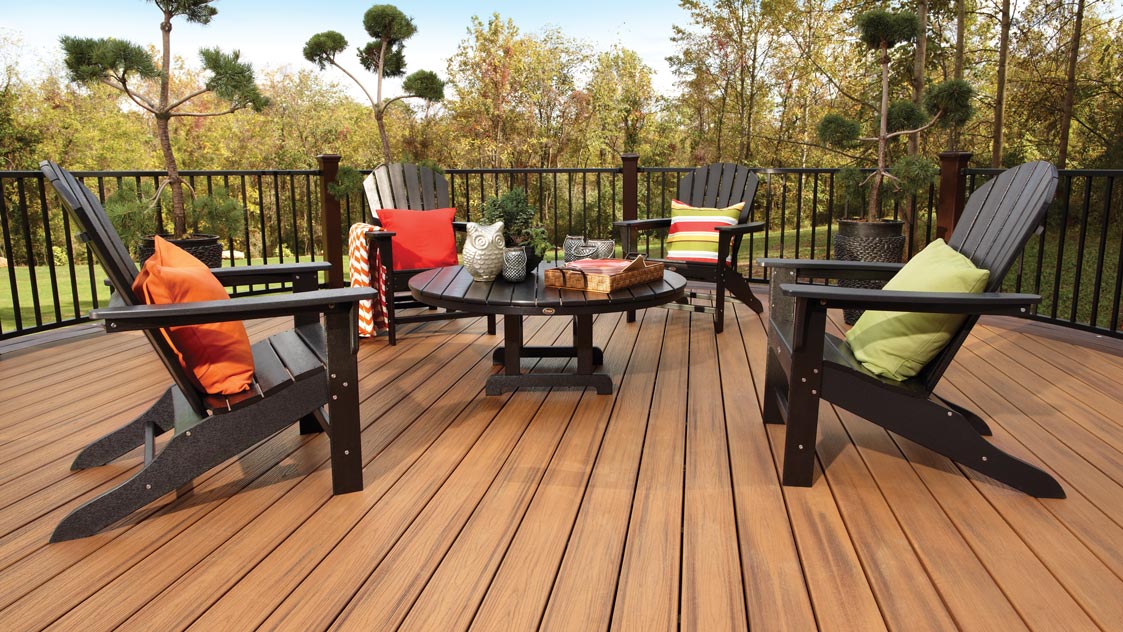
Price Differences
In general, wood decking has traditionally been less expensive than composite decking. However, this isn’t always the case. Market prices can fluctuate, and this means that it’s common to see the price per linear foot of wood decking rise and fall, dramatically at times. There are also several different price levels within wood decking: pressure-treated wood is usually the cheapest option, followed by naturally hardy wood like cedar. Exotic woods are the most expensive.
There tends to be slightly less variation in prices when it comes to composite decking, however. Wood-plastic composite decking is generally the most inexpensive of the composites, though mineral composite decking is rapidly becoming comparable in price. Plastic cellular PVC, meanwhile, tends to be the most expensive type of low-maintenance decking.
Generally, wood decking is more affordable, but only when the lumber market isn’t in flux. In many ways, in times of inflated wood prices, it might be more economical to use composite materials in your deck than it would be to rely on natural wood. As we’ve continued to note, maintenance costs should also factor in: wood is cheaper up front, but carries recurring costs for stain, sealant, and deck repairs as it weathers. Composite costs more up front, but is essentially a one-time cost for a deck that doesn’t require any staining, painting or sealing.
For a free estimate on your project, just measure out the area of your deck and call our team at 1-888-824-5316. We’d be happy to help you weigh pricing options to get the look you want!
Design and Curb Appeal
The design and curb appeal of natural wood vs composite decking is highly subjective: it all depends on the look you want for your deck. With every technological advance, composite decking does a better and better job of mimicking the look and feel of natural wood. This means that from an aesthetic standpoint, it can be difficult to choose between the two. However, there are some other factors to keep in mind when it comes to the overall look of your deck.
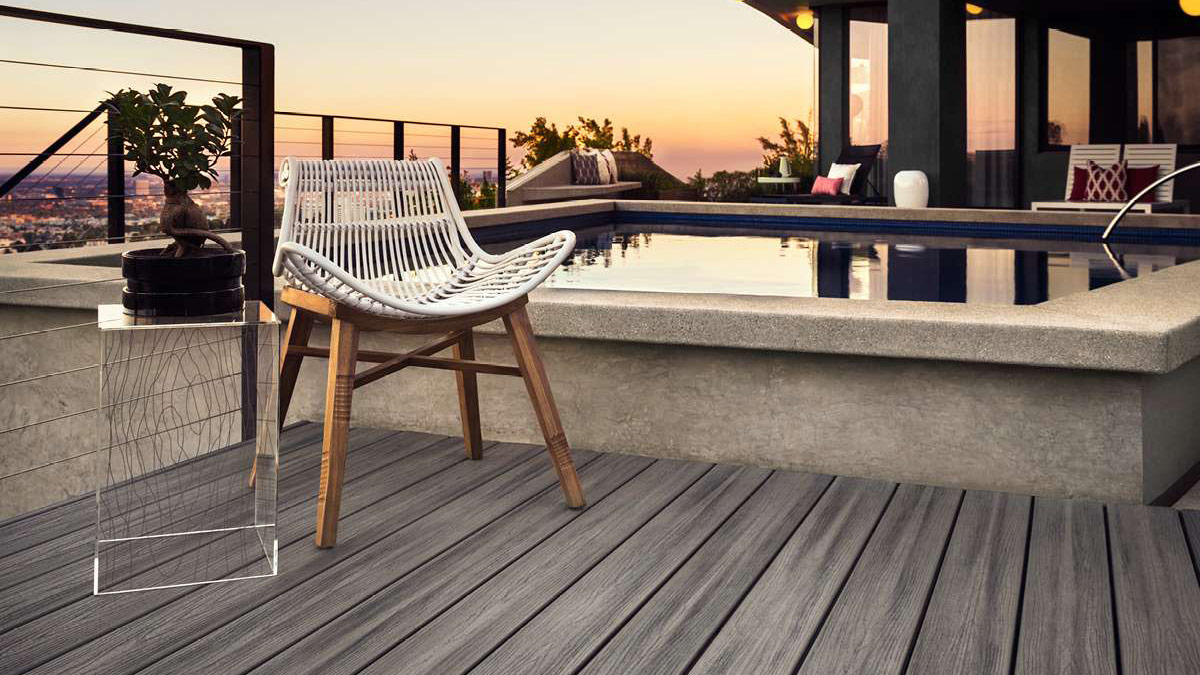
Staining
Wooden decking material is, by its very nature, accepting of wood stains and paints. This is because this organic material is naturally porous. This includes even pressure-treated wood. However, this same ability to absorb wood stains also means that it’s possible for wood decking to retain other stains, such as grease or oil. Additionally, an (intentionally) stained deck will need to be sealed and re-stained periodically to maintain its luster and look, as wood fades over time.
Meanwhile, staining is a much less prevalent problem with composite decking. These decks come in a multitude of different colors to match different natural wood stains, but because of their protective capping, they don’t retain accidental stains nearly as much.
Overall Look
The overall aesthetics of your deck is an important but subjective question. As noted above, many people prefer the look of natural wood, or a specific type of wood. On the flip side, composite decking comes in a huge variety of color and finish options, many designed to mirror the look of exotic hardwoods. The advantage of composite is that the look when you install the board tends to endure much better than wood, which fades and weathers quickly.
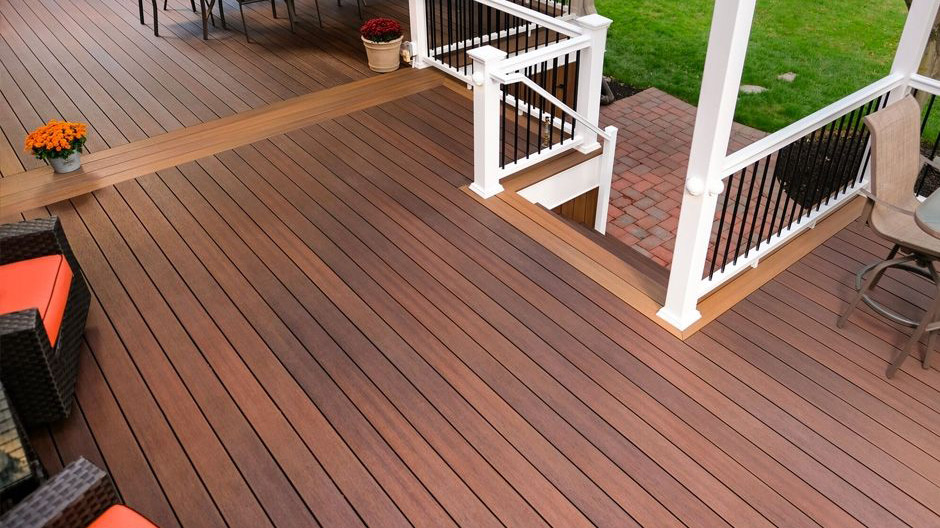
Versatility
Both wood and composite decking materials have high levels of versatility. However, in this case, composite decking gets the edge because of a few factors. First, most wooden planks are sold in lengths of 16 feet, while composite planks can come in lengths of 20 feet. This means that your deck will have fewer seams depending on its dimensions if you use composite. Additionally, composite decking can be secured using more varied application methods besides just screwing them down to your joists. Most manufacturers have developed hidden fastener, clip, or plug systems that work perfectly with composite deck boards to deliver a deck surface unblemished by unsightly screwheads.
To learn more about hidden fastener options, browse our in-stock inventory or call a project manager at 1-888-824-5316 for personalized project planning.
Environmental Factors
Decking is, by definition, designed to be capable of handling the elements. Deck boards are designed to be outside for their entire lifetime, after all! That being said, there are some differences in environmental factors to consider. Wooden boards tend to be more susceptible to climate differences: wood tends to swell and shrink when exposed to changes in temperature and humidity. Composite decking shows much less expansion and contraction, and mineral-based composites are designed to feature almost no thermal expansion or contraction. This makes composite decking materials a better choice for four-season decking.
Other things to consider when it comes to environmental factors include things like resistance to damage through mold, fungi, mildew, algae, scratches, and even fire. Composite decking resists mold, mildew and other water damage much better than traditional wood does. (Fully-synthetic PVC decking offers the best water resistance on the market). Composites are also safer from fire - in fact, many composite deck boards are certified as Class B for flame spread, an important consideration for decks in areas prone to wildfires.
Safety
Safety is always important when it comes to your choice of decking material, not just for yourself but for your family. If you have young children, for example, you want to ensure your decking choice isn’t going to place your kids or your pets at risk if they walk on it. The most common safety issue with wooden decks is often splintering, which can lead to painful, punctured feet for pets, children, and adults. Thankfully, splinters can be prevented by keeping your deck sanded periodically. Meanwhile, composite decking doesn’t splinter like wood decking, so there’s no need to inspect or sand down your deck boards to keep bare feet safe.
Maintenance
Maintenance is easily the biggest difference between wood and composite decking. Because of its non-organic nature, composite decking materials require much less maintenance than wooden decking. Composite decks also last longer than wooden ones, even if you’re diligent about sealing, staining, and sanding your wood deck regularly.
Eco-Friendliness
If being ecologically savvy is important to you, composite decking is the clear winner. Composite decking is routinely made with recycled materials, reusing plastics that would otherwise end up in landfills. Wood decking, meanwhile, contributes to deforestation as the lumber industry cuts down trees to treat and process into decking material.
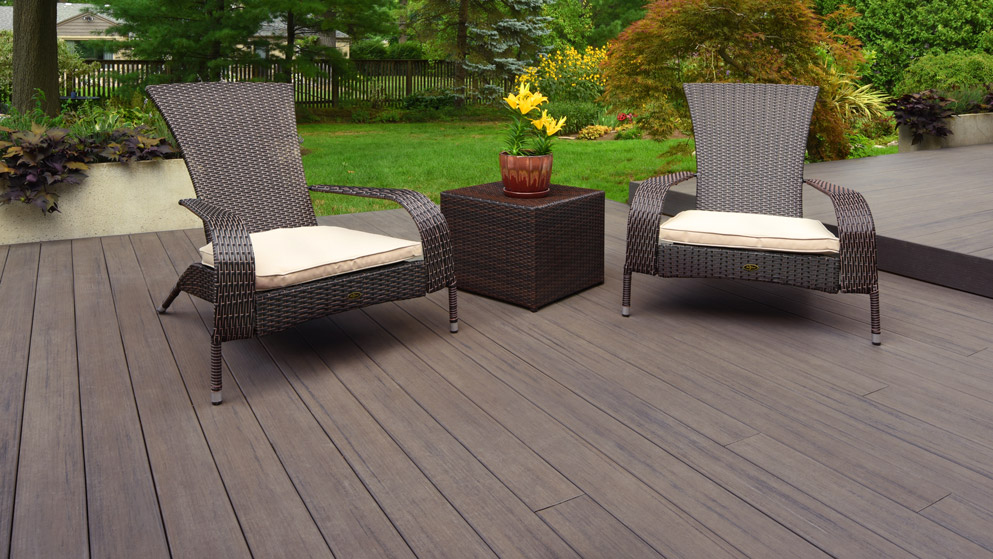
How to Decide What Works Best For You
Choosing whether you’re going to use wood versus composite for your decking material depends on your vision for your deck. At DecksDirect, we’ve helped thousands of customers build decks of their own, and we’re convinced: composite decking (or PVC/mineral-based decking) is the way to go. It’s important to plan your deck for the long-term, and you shouldn’t compromise decades of deck bliss to save some money on a cheaper decking material up front.
If you’d like help picking out the right decking, call our team at 1-888-824-5316 for a free chat with an experienced project planner. We’ll get to know you, your lifestyle, and your deck vision to help build a deck package perfectly tailored to you.
Shop DeckingMore Deck-Planning Resources
- What Deck Boards Are Right For My Deck?
- How To Choose The Right Decking Brand
- DecksDirect’s Guide To Low-Maintenance Decking Materials
The Last Word on Wood Decks vs Composite Decks
No matter what type of decking material you choose, DecksDirect is here to help you bring your deck vision to life. Call our dedicated team of deck project planners at 1-888-824-5316 to talk through the ideal look and function you want for your deck. Our team will help you plan a beautiful, high-quality deck that you can enjoy for years - and we’ll tailor your plan to your outdoor space and your vision.
